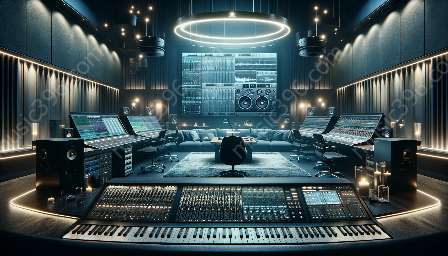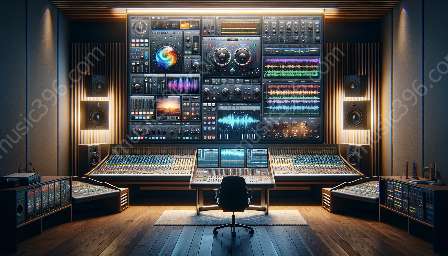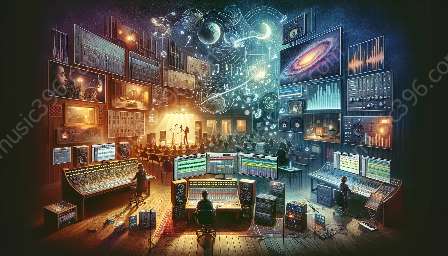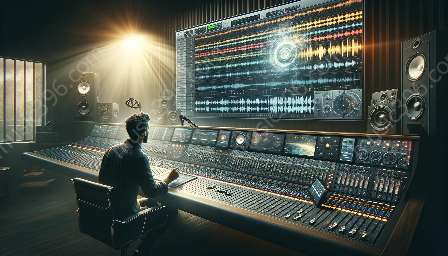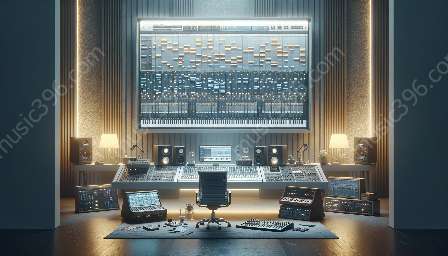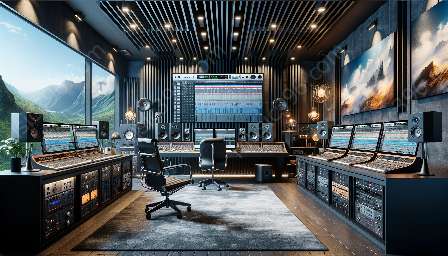Music composition and songwriting have been revolutionized by the advent of digital audio workstations (DAWs), providing composers and songwriters with powerful tools to unleash their creative potential. In this comprehensive guide, we will explore the various ways DAWs can be utilized for music composition and songwriting, as well as the significance of understanding audio tracks within DAWs.
The Role of DAWs in Music Composition and Songwriting
Digital audio workstations, commonly referred to as DAWs, are software applications designed to record, mix, edit, and produce audio files. They have become an indispensable tool for musicians, enabling them to create, arrange, and manipulate musical ideas with unprecedented ease and flexibility.
One of the key advantages of using DAWs for music composition and songwriting is the ability to work with digital audio tracks, MIDI data, and virtual instruments within a single environment. This allows composers and songwriters to seamlessly integrate different elements of their compositions, experiment with various sounds and arrangements, and fine-tune every aspect of their music.
Understanding Audio Tracks in DAWs
In the context of music composition and songwriting, audio tracks play a crucial role in capturing and organizing recorded sounds. Understanding audio tracks in DAWs involves knowing how to record, edit, and manipulate audio files to achieve the desired sonic expression.
DAWs provide a range of tools and features tailored to working with audio tracks, including multitrack recording, audio editing, time-stretching, pitch correction, and audio effects processing. Composers and songwriters can utilize these capabilities to capture live performances, layer multiple sound sources, and craft polished recordings that meet their artistic vision.
Using DAWs for Music Composition and Songwriting
There are several ways in which DAWs can be leveraged for music composition and songwriting:
- Arrangement and Structure: DAWs offer intuitive tools for arranging musical sections, creating transitions, and organizing the structure of a composition. Composers and songwriters can easily move, copy, and rearrange musical segments to experiment with different song arrangements and forms.
- Virtual Instruments and MIDI: DAWs come equipped with virtual instruments and MIDI support, enabling composers and songwriters to access a wide range of sounds, synths, and samplers to build musical ideas. MIDI data can be manipulated to modify note positions, velocities, and durations, providing creative control over the musical performance.
- Audio Recording and Editing: DAWs facilitate the recording of live instruments, vocals, and other sonic elements, allowing composers and songwriters to capture authentic performances. Advanced audio editing tools empower them to edit recordings, apply corrective processes, and create seamless audio transitions.
- Sound Design and Mixing: With a variety of built-in audio effects, signal processing tools, and mixing capabilities, DAWs enable composers and songwriters to sculpt and refine the sonic characteristics of their compositions. They can shape the tonal qualities, spatial placement, and dynamics of individual tracks, as well as achieve a cohesive mix for the entire composition.
- Collaboration and Sharing: DAWs often include features for collaboration and sharing, allowing composers and songwriters to work with other musicians, producers, and engineers in a collaborative, remote, or distributed environment. This facilitates seamless communication, file sharing, and version control, streamlining the creative process.
Enhancing Creative Workflow with DAWs
Utilizing DAWs for music composition and songwriting can significantly enhance the creative workflow of composers and songwriters. By leveraging the capabilities of DAWs, creators can:
- Efficiently capture and develop musical ideas in a digital environment, eliminating the limitations of traditional pen-and-paper notation.
- Experiment with diverse musical arrangements, instrumentations, and sonic textures, fostering creative exploration and experimentation.
- Streamline the recording, editing, and production processes, resulting in professional-quality recordings and compositions.
- Collaborate with other artists and professionals, transcending geographical boundaries and time constraints to create music collaboratively.
Conclusion
Digital audio workstations have become an indispensable tool for musicians and songwriters, offering a versatile and comprehensive platform for music composition and songwriting. By understanding the significance of audio tracks within DAWs and harnessing their capabilities for arrangement, recording, editing, mixing, and collaboration, composers and songwriters can elevate their creative output to new heights, realizing their artistic vision with precision and artistic integrity.

